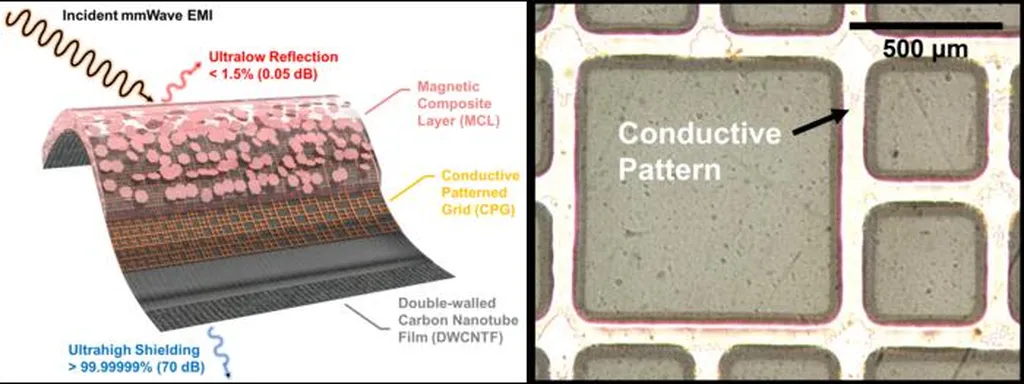In the quest to enhance radar absorption technology, researchers have turned to an unconventional yet promising material: iron particles dispersed in epoxy. A recent study led by Daekyeong Jung from the IT Application Research Center at the Korea Electronics Technology Institute has unveiled a novel approach to designing single-layer radar absorbers that could revolutionize various industries, including the energy sector.
The study, published in the journal *Materials Research Express* (which translates to *Materials Research Express* in English), explores the electromagnetic (EM) and radar absorption characteristics of iron/epoxy polymer composites. By utilizing two types of iron particles with different sizes, the research team created mixtures with varying weight fractions and analyzed their EM properties.
“Our goal was to optimize the mixing ratio of iron particles to achieve the best radar absorption performance,” Jung explained. The team measured the dielectric loss tangent and magnetic loss tangent of five different mixtures using a coaxial waveguide, providing insights into how the mixing ratios influence EM properties.
The findings revealed that the mixture with an 8.5:1.5 ratio of the two iron particle types demonstrated the widest radar absorption bandwidth and the best overall performance. This discovery could lead to significant advancements in the design of radar absorbers, offering reduced thickness and enhanced efficiency.
The implications for the energy sector are particularly noteworthy. Radar absorbers are crucial for minimizing electromagnetic interference and improving the performance of various energy systems. For instance, in wind farms, radar absorbers can help mitigate the interference caused by wind turbines, ensuring smoother operations and better integration with radar systems used for weather monitoring and air traffic control.
“By optimizing the design of these iron/epoxy radar absorbers, we can achieve superior absorption performance over the desired bandwidth,” Jung added. This innovation could pave the way for more efficient and cost-effective solutions in the energy sector, ultimately contributing to a more sustainable future.
The study’s findings not only highlight the potential of iron/epoxy composites in radar absorption technology but also open new avenues for research and development in materials science. As the demand for advanced radar systems continues to grow, the need for innovative materials that can enhance performance and reduce thickness becomes increasingly critical.
In conclusion, the research led by Daekyeong Jung offers a promising solution to the challenges faced by the energy sector and beyond. By leveraging the unique properties of iron/epoxy composites, the study provides a blueprint for the next generation of radar absorbers, setting the stage for future advancements in this vital field.

